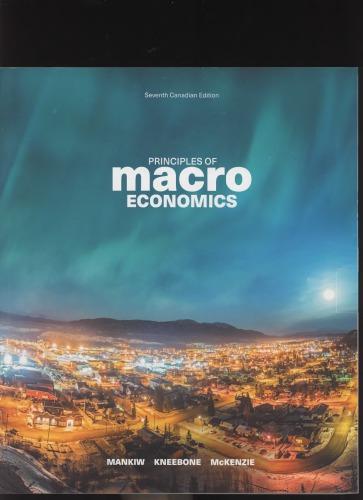2. In Chapter 15, we learned that the multiplier effect associated with a change in government purchases
Question:
2. In Chapter 15, we learned that the multiplier effect associated with a change in government purchases could be expressed as 1/(1 — MFC + MPI), where MPC is the marginal propensity to consume and MPI is the marginal propensity to import. If MPC = 0.90 and MPI = 0.10, then we can use this formula to calculate that the multiplier effect associated with a change in government purchases is equal to 5. A problem with which fiscal policymakers must deal is the fact they are not absolutely certain what the true magnitudes of the MPC and MPI are. Suppose these values were actually 0.95 and 0.05, respectively. How would this affect the size of the multiplier effect? How does uncertainty about the size of the values of MPC and MPI affect your position on the debate over whether policymakers should try to stabilize the economy?
Step by Step Answer:

Principles Of Macroeconomics
ISBN: 9780176591977
7th Canadian Edition
Authors: N. Mankiw, Ronald Kneebone, Kenneth McKenzie






